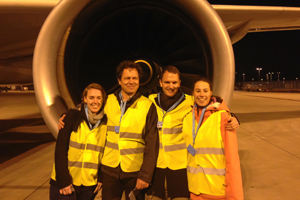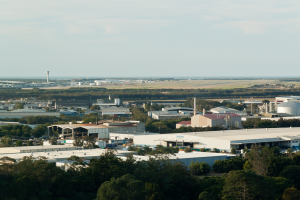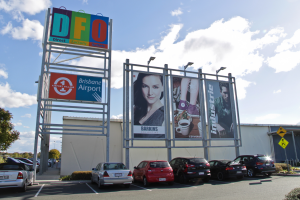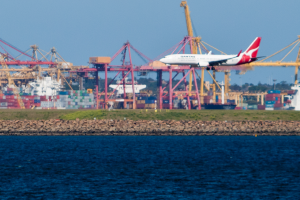Airports as foci of real estate development and employment: small scale analyses in Australian metropolitan areas
Airports as foci of real estate development and employment: small scale analyses in Australian metropolitan areas
Abstract
In recent years, airports and adjacent areas have often been focal points of new multifunctional urban nodes. These centres have obtained significant regional importance for property development, as locations for major companies, and for employment. Models of airport-led urban development, such as the “Airport City”, “Aerotropolis”, “Airport Corridor” and “Airea”, can be useful to describe and analyse the characteristics and implications of the resulting shifts in the urban economic system. However, there is scope for further sophistication of these models, especially with regard to environmental issues, local specifics and quantification of crucial processes. Airports not only induce economic growth in adjacent areas, but often also promote uncoordinated development. This frequently leads to unsatisfactory outcomes for the city as a whole and spurs local conflicts. Moreover, airport-induced development can be inconsistent with the goals of sustainable urban development set by planning authorities.
The main objective of this project is to describe and explain the physical and functional structures in the vicinity of major airports. The Airea model (Schlaack 2010) is used as an overarching analytical framework. The experiences and results gained within the project will help to specify this model and to strengthen its analytical accuracy. A special emphasis lies on airport-driven relocation of businesses, suburban centres of employment as well as spatial patterns of commuting and service provision. In order to analyse the complex relationships between airports and cities, small-scale quantitative analyses of building activity, employment and commuter-patterns will be conducted. Moreover, we are planning to interview key actors from urban planning authorities, state governments, real estate developers, airport operators and airport-related companies, taking into account the complex nature of explanatory factors. Our empirical findings will help to improve the existing models of airport-led urban development. Five Australian metropolitan areas have been chosen as study areas for the quantitative analysis, namely Sydney, Melbourne, Brisbane, Perth and Canberra. Australian cities offer excellent research conditions regarding the specific characteristics of urban form, functional configurations, institutional settings and data availability. The qualitative survey will focus on Sydney and Brisbane, utilising their different urban characteristics and airport layouts.
Team
| Principal Investigator: | Prof. Dr. Boris Braun, Institute of Geography, University of Cologne |
| Research fellow: | Dipl.-Geogr. Fabian Sonnenburg, PhD candidate, Institute of Geography, University of Cologne |
| Student assistants: | Roxana Leitold, M.Sc. Miriam Schröer |
Academic partners
| Prof. Douglas Baker, PhD | School of Civil Engineering and Built Environment, Property and Planning, Queensland University of Technology, Brisbane |
| Prof. Robert Freestone, PhD | Planning, Research Centre Staff, Sustainable Design and Development, Urban Typologies, University of New South Wales, Sydney |
| Prof. Dr. Johanna Schlaack | Postdoctoral Researcher and Urbanist, Center for Metropolitan Studies, Technische Universität Berlin |
| Adj. Assoc. Prof. Glen Searle, PhD | School of Geography Planning and Environmental Management, University of Queensland, Brisbane |
Funding
The project is funded by the German Research Foundation (Deutsche Forschungsgemeinschaft, DFG) for 36 months from August 2012 to August 2015.
Related publications
- SEARLE, G. & B. BRAUN (2012), Neue Trends in der Stadtplanung und -entwicklung australischer Großstädte. Geographische Rundschau 64(10), 12-19.
- SONNENBURG, F. (2012): Wirtschaftsstruktur und Auswirkungen der Finanzkrise in Australien und Neuseeland. Geographische Rundschau 64(10), 48-49.
- SCHLAACK, J./SONNENBURG, F. (2013): Flughäfen - Kompakte Stadt - Umweltschutz. Zielkonflikte und Gestaltungsmöglichkeiten. Planerin (5), 23-25.
- SONNENBURG, F. (2013): The Effects of Airports on Industrial and Commercial Property Development: The Case of Brisbane Airport. Zeitschrift für Australienstudien 27, 145-164.
- BRAUN, B./SCHLAACK, J. (2014): Flughäfen als Kristallisationspunkte der Stadt- und Wirtschaftsentwicklung - Trends und räumliche Modelle. Geographische Rundschau 66(1), 4-11.
- SONNENBURG, F. (2014): Australische Flughäfen als dynamische Wachstumszentren: Immobilien- und Beschäftigungsentwicklung. Geographische Rundschau 66(1), 36-44.
- SONNENBURG, F./KOKOTT, D. (2014): "Tanz Terminal, tanz" - Flughäfen als Eventstandort. Geographische Rundschau 66(1), 35.
- SONNENBURG, F. (2014): Flughafenbezogene Immobilienentwicklung und Planungskonflikte: Eine Diskussion am Beispiel von Brisbane/Australien. Planung Neu Denken Online (1), Artikel auf pnd|online.



